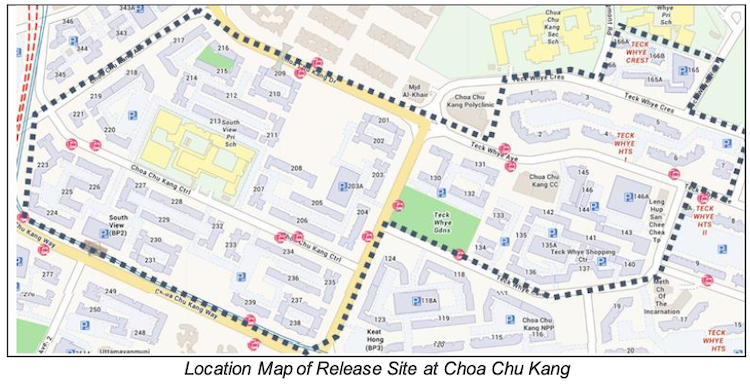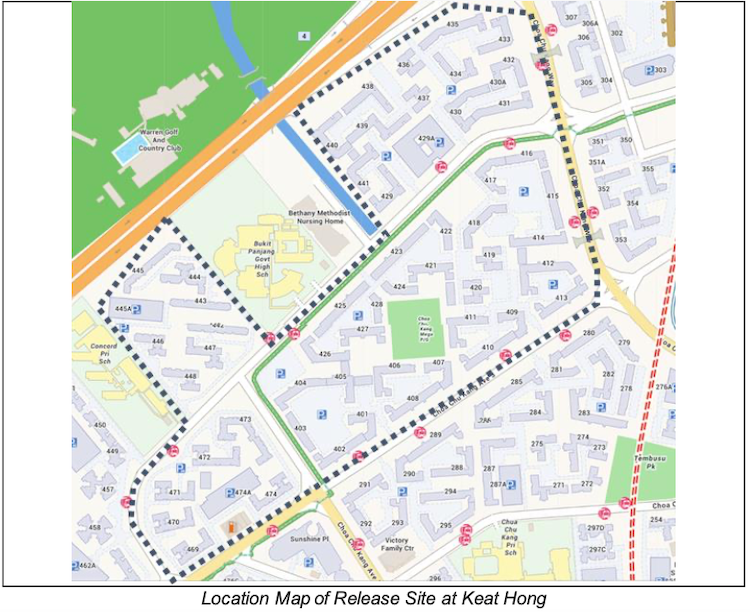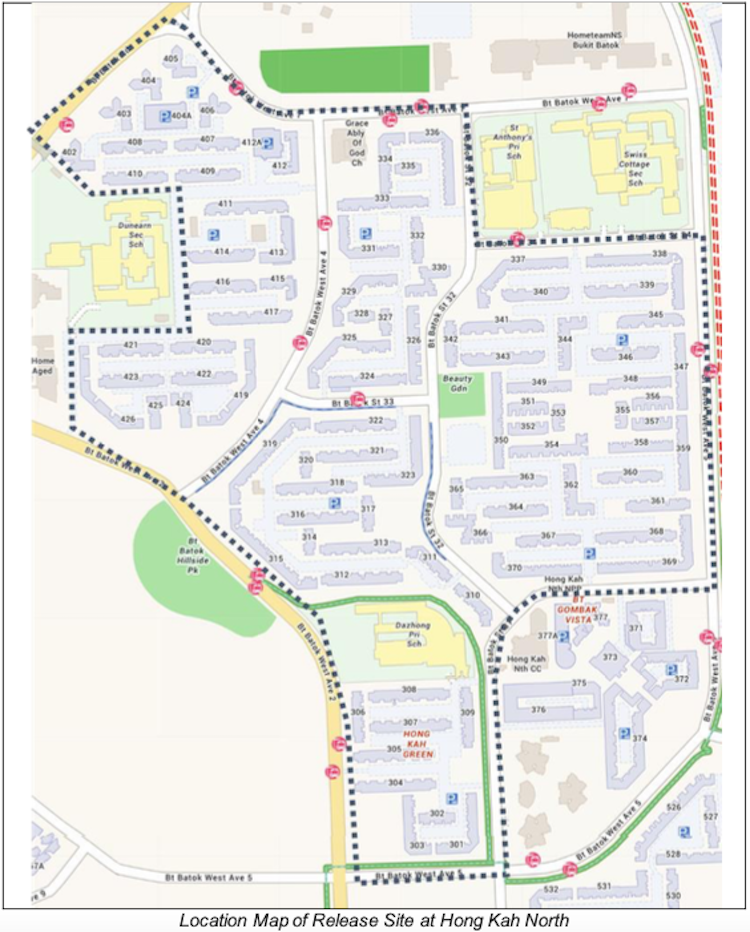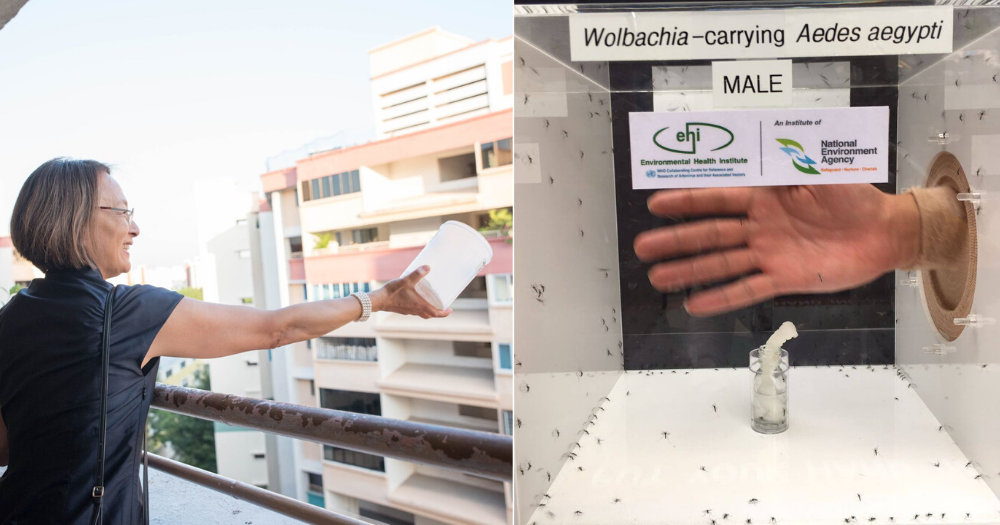With the number of dengue cases projected to exceed 16,000 cases this year, the National Environment Agency (NEA) will be releasing Wolbachia-Aedes male mosquitoes at selected neighbourhoods this month.
As of Apr. 20, five people have died of dengue and the number of cases was almost at 5,800.
How Project Wolbachia can help reduce dengue cases
In an effort to curb the spread of dengue, Project Wolbachia was started in 2016.
The project involves the release of male Aedes mosquitoes infected with the a type of bacteria called Wolbachia.
The Wolbachia-infected male Aedes mosquitoes are sterile and when they mate with female Aedes mosquitoes, the eggs never hatch, or their offspring inherit the disease and are also rendered infertile.
All-in-all, the population of Aedes mosquitoes decreases and this would lead to a decrease in the number of cases of dengue in Singapore.
According to NEA, the Wolbachia bacteria is safe and occurs naturally and is found in more than 60 per cent of insect species, including butterflies, fruit flies, dragonflies, and various mosquito species.
In addition, as male mosquitoes do not bite, the release of male Wolbachia-Aedes mosquitoes will not pose any additional risk of biting or disease transmission.
Success in Yishun & Tampines towns
Ever since this project was rolled out in areas in Yishun and Tampines, there has been a 90 per cent suppression of the urban Aedes aegypti mosquito population at existing study sites.
Due to the suppression of the mosquito population, NEA revealed that there were 65 to 80 per cent fewer dengue cases at the Yishun and Tampines study sites where releases had been carried out, compared to at the sites without releases.
The project has helped keep the Aedes mosquito populations at these two towns at low dengue-risk levels for over a year.
Following the success of the initial study sites, Yishun and Tampines towns will be slowly rolling out the release of Wolbachia-infected male mosquitoes into adjacent neighbourhoods, involving 553 blocks in total.
Expansion of Project Wolbachia to CCK & Bukit Batok
In addition to neighbourhoods in Yishun and Tampines, NEA will be expanding the release of male Wolbachia-Aedes mosquitoes at Choa Chu Kang, Keat Hong and Hong Kah North, which have high Aedes aegypti mosquito populations.
Male Wolbachia-Aedes mosquitoes will be released at 207 blocks in selected neighbourhoods.
NEA researchers will be releasing male Wolbachia-Aedes mosquitoes at public spaces around houses and blocks, including:
- Stairwells
- Void decks
- Open spaces (between blocks of high-rise homes)
However, male Wolbachia-Aedes mosquitoes will not be released directly into homes.
Other than continuing to stay vigilant and carrying out mosquito control procedures as usual, residents in these areas do not have to do anything else differently.
According to NEA, an estimated average of six or fewer male mosquitoes per person will be released regularly at these sites.
NEA will be engaging residents and local stakeholders at the release sites in the coming months.
NEA hopes that this targeted release will help to test and determine the best approaches for future wider scale deployment for Project Wolbachia in Singapore.
According to Ng Lee Ching, Director of NEA’s Environmental Health Institute (EHI), the expansion of release sites will help to suppress Aedes mosquito populations:
“Project Wolbachia – At Choa Chu Kang and Bukit Batok towns, the study will take a more targeted approach and zero in on selected neighbourhoods with consistently high Aedes aegypti mosquito populations, to preemptively suppress the Aedes aegypti mosquito populations.”
Here are the maps of the release sites in Bukit Batok and Choa Chu Kang:
 Screenshot via NEA
Screenshot via NEA
 Screenshot via NEA
Screenshot via NEA
 Screenshot via NEA
Screenshot via NEA
For more details on Project Wolbachia, you can visit NEA's website here.
Top photos via National Environment Agency/Facebook
If you like what you read, follow us on Facebook, Instagram, Twitter and Telegram to get the latest updates.
